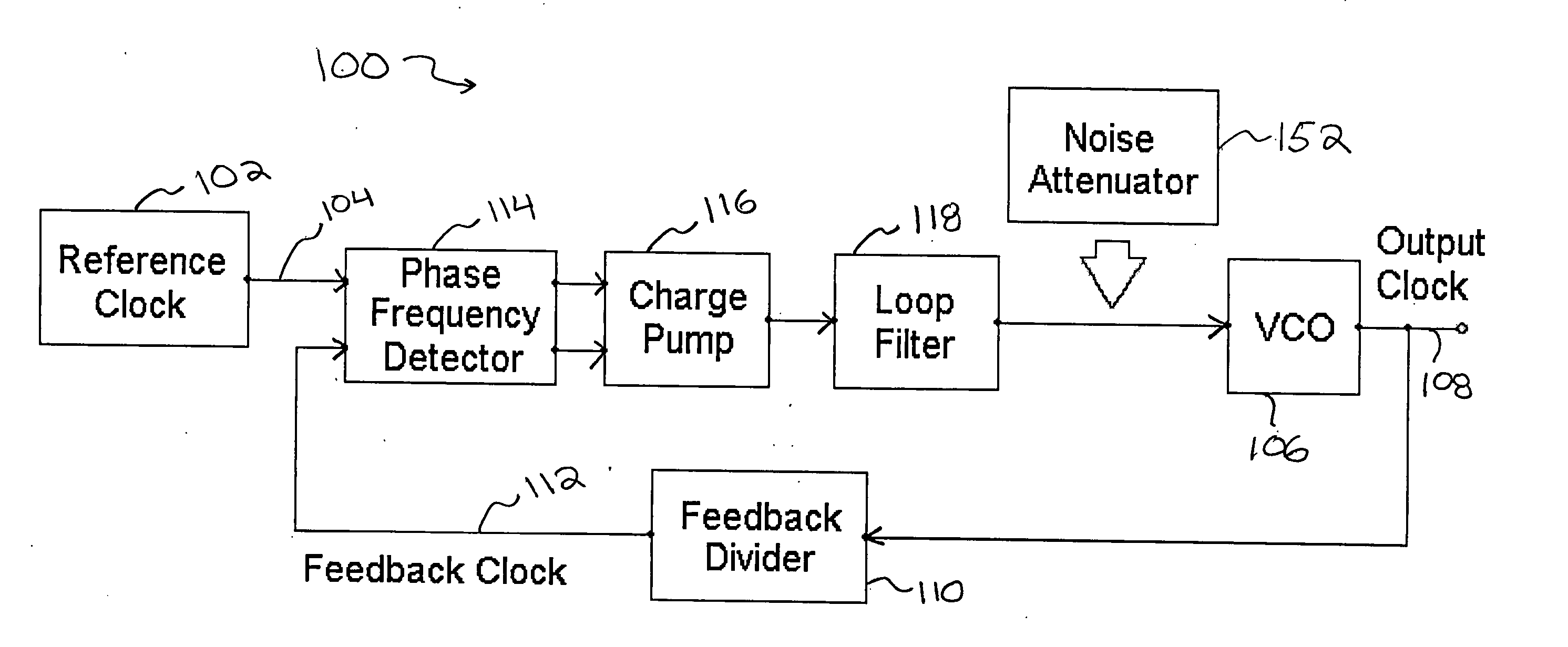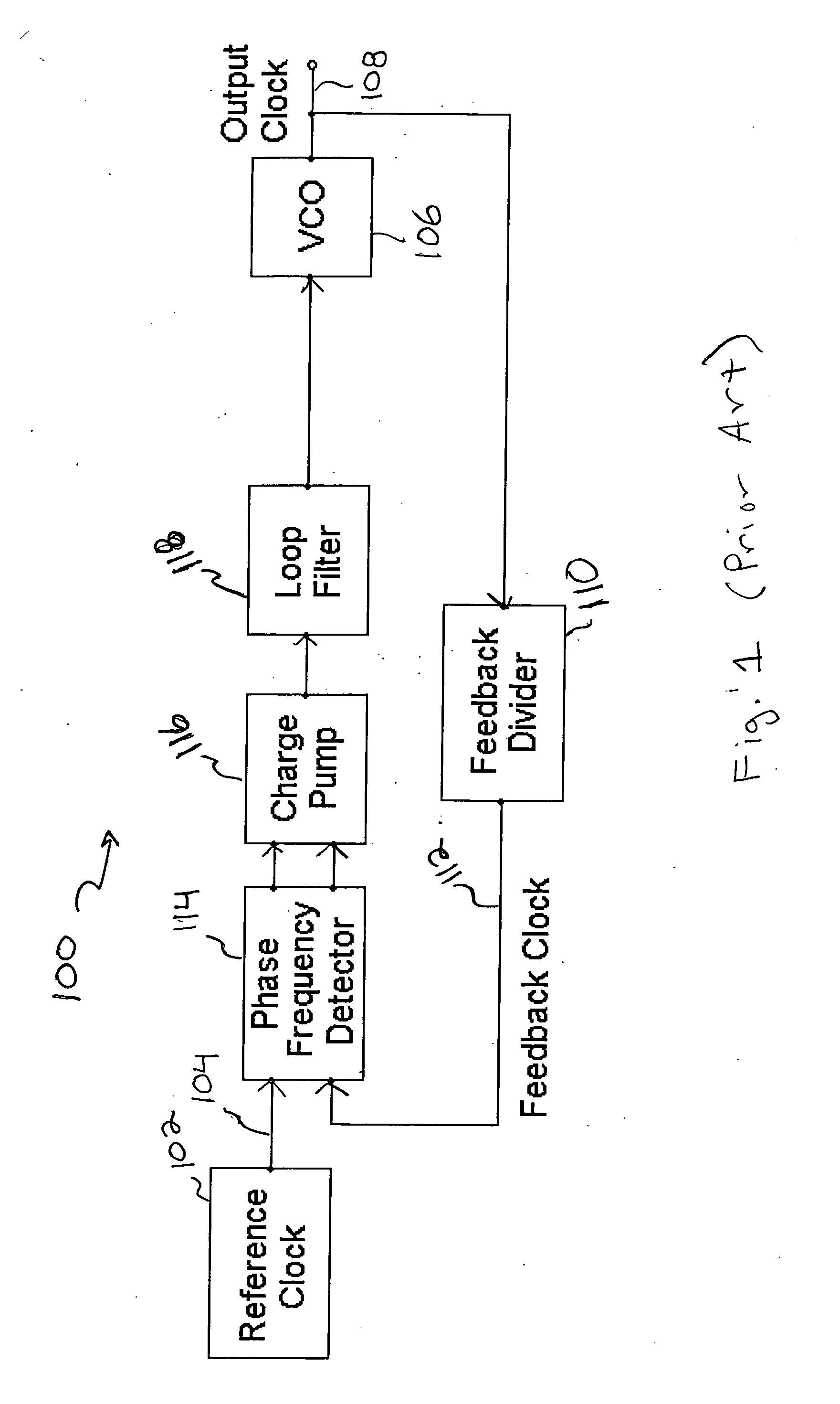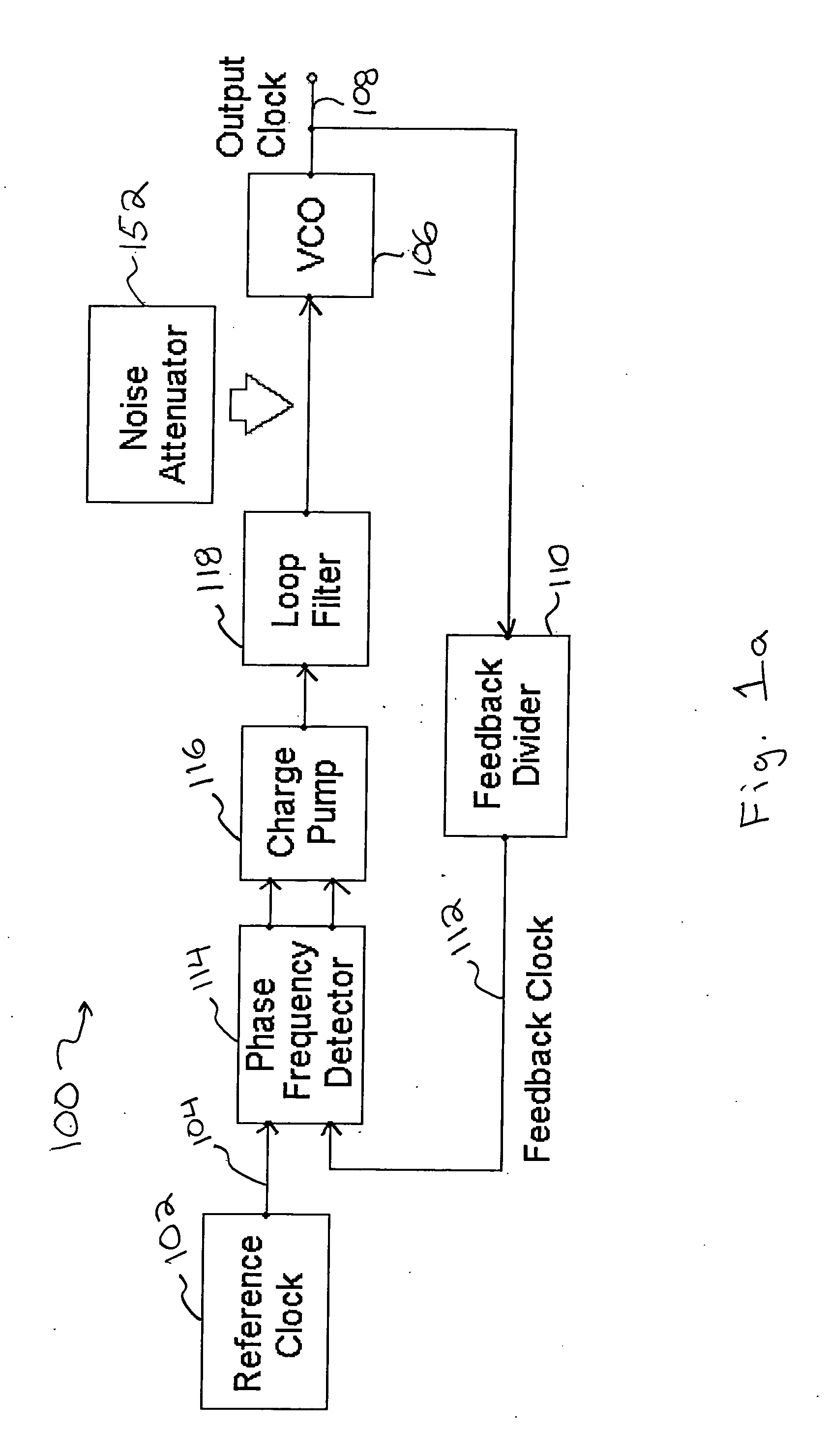Method and apparatus to reduce the jitter in wideband PLL frequency synthesizers using noise attenuation
a wideband pll frequency synthesizer and noise attenuation technology, applied in electrical equipment, transmission, automatic control, etc., can solve the problems of reducing the required silicon area, too big to be integrated on-chip, and a higher gate leakage current, so as to reduce the contribution of loop filter nois
- Summary
- Abstract
- Description
- Claims
- Application Information
AI Technical Summary
Benefits of technology
Problems solved by technology
Method used
Image
Examples
second embodiment
[0066] The polysilicon resistors and the transconductance of the source follower transistor do not track well over process and temperature. As a result a noticeable variation of the attenuation factor and of the output impedance may appear over process and temperature. Furthermore the control voltage for the oscillator varies over a range that has a large offset voltage (Voff; Voff+ΔV). For many oscillators the control voltage also sets the amplitude of oscillation, which needs to be kept high such that a low phase noise results. Generating the entire control voltage with an IR voltage drop leads to a large current in the attenuator, that may not be compatible with many portable applications. FIG. 3.b presents the loop filter noise attenuator in which an additional diode connected NFET Mdiod is added in the bottom leg of the divider. The transistor Mfol and diode Mdiod operate at the same current level and are in close proximity, such that they operate at the same temperature. In th...
third embodiment
[0074]FIG. 3.c presents the loop filter noise attenuator that boosts the attenuation factor by using a zero-Vt thick oxide NFET as source follower. In doing so the voltage range at the output of the charge-pump is reduced by a Vth threshold voltage for thick oxide devices (0.7-0.8V), allowing a maximum attenuation factor of 2.5 for a minimum supply voltage of 3V. As will be recognized by those skilled in the art, the embodiments shown herein are not limited to the particular device types (NFET or PFET) shown. For example, FIG. 3d illustrates a PFET version of the circuitry of FIG. 3a.
[0075] If the supply voltage has significant noise a regulator may need to be used, reducing the available headroom and thus constraining the maximum attenuation factor. It may be desirable therefore to use circuit solutions that can provide a larger value for the attenuation factor and thus a more substantial reduction of the loop filter on-chip capacitance.
c. Cascoded Source Follower Attenuator for...
first embodiment
[0111] Yet another embodiment for realizing an active attenuator is to use a common source MOSFET (or common emitter BJT) with resistive load both in the source (emitter) and drain (collector). FIG. 9a shows the common source attenuator that provides a supply referenced control voltage to the oscillator. As shown in FIG. 9a, a common source transistor Mbuf is coupled to a source resistor Rs and a drain resistor Rd.
[0112] The gain of the stage is given by the ratio of the two resistors: G=1A=-RdRS+1gm(Mgain)≈-RdRS(16)
[0113] The resistor Rd is selected smaller than the resistor Rs, such that the gain results smaller than unity (attenuation). The capacitor Cp2 in conjunction with the reisistor Rd gives a second ripple pole that filters the high frequency noise. The noise of the Mbuf device (both thermal and 1 / f noise) is well degenerated by the high value resistor Rs. The noise contribution of the attenuator is dominated by the noise coming from the output resistor Rd.
[0114]FIG. 9b ...
PUM
 Login to View More
Login to View More Abstract
Description
Claims
Application Information
 Login to View More
Login to View More - R&D
- Intellectual Property
- Life Sciences
- Materials
- Tech Scout
- Unparalleled Data Quality
- Higher Quality Content
- 60% Fewer Hallucinations
Browse by: Latest US Patents, China's latest patents, Technical Efficacy Thesaurus, Application Domain, Technology Topic, Popular Technical Reports.
© 2025 PatSnap. All rights reserved.Legal|Privacy policy|Modern Slavery Act Transparency Statement|Sitemap|About US| Contact US: help@patsnap.com



